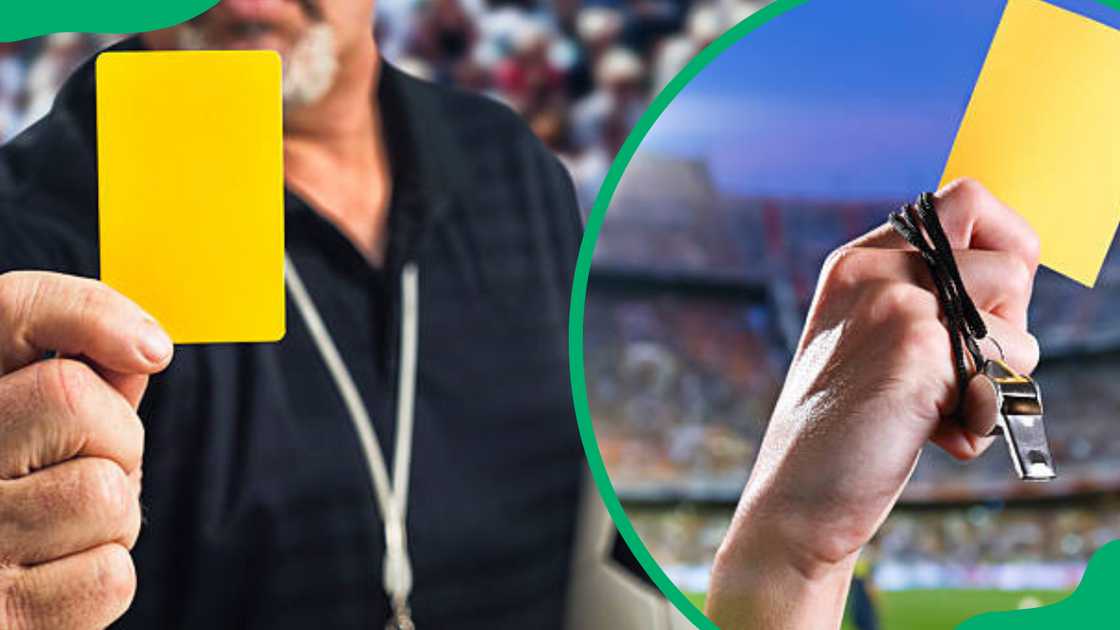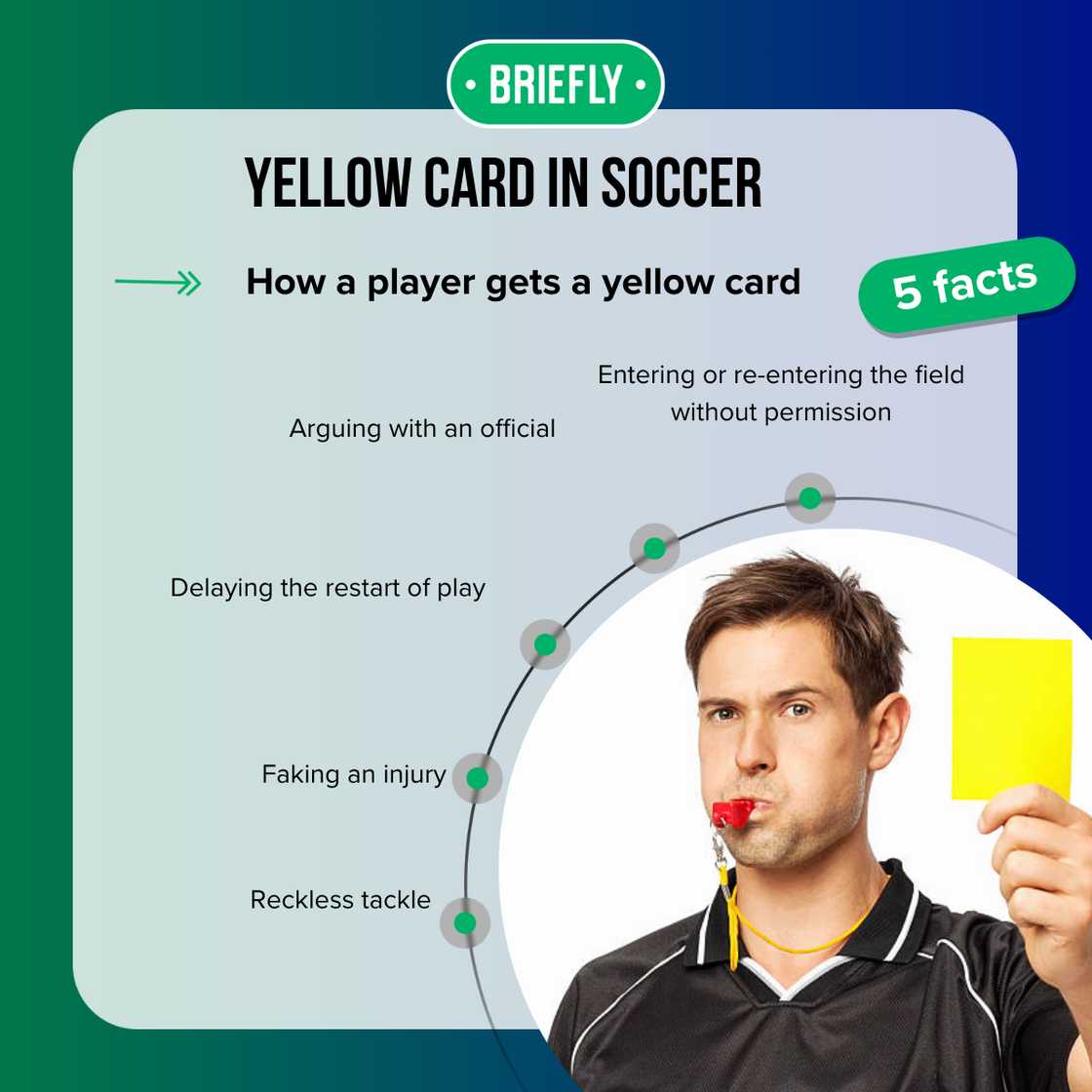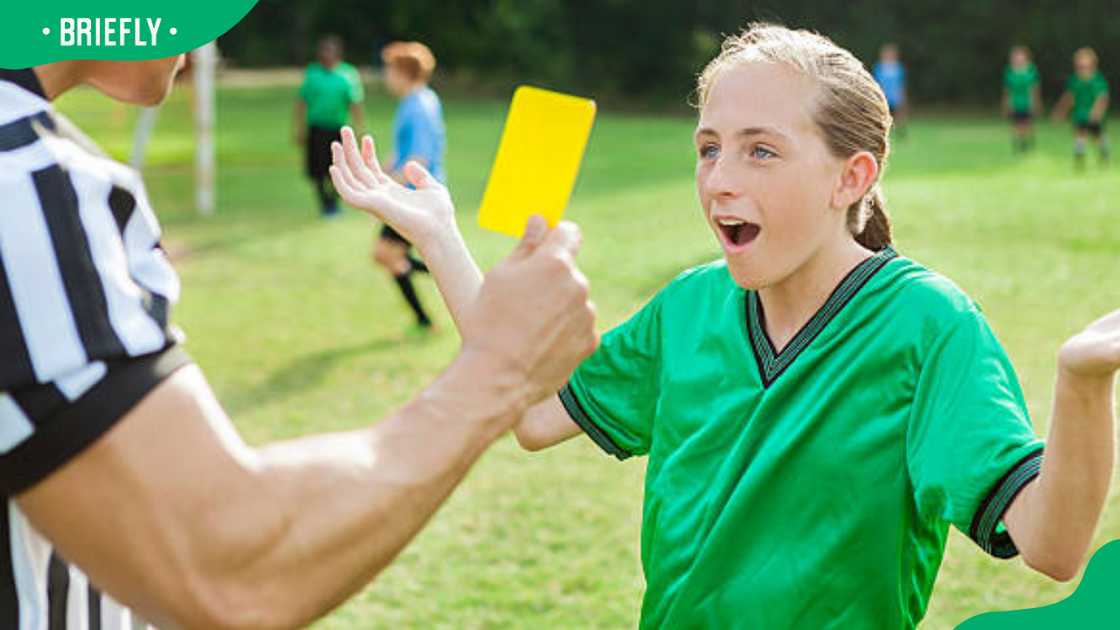What is a yellow card in soccer? Rules and implications
In the thrilling world of soccer, a yellow card is a powerful symbol of discipline; it signals caution and often instantly changes the game's momentum. It serves as a warning to players, reminding them to tread carefully or risk a harsher penalty. Discover the rules and implications of a yellow card in soccer.

Source: UGC
TABLE OF CONTENTS
In soccer, a yellow card is more than just a coloured piece of cardboard. When flashed by the referee, it signals a player's need for caution and restraint. This simple warning can lead to strategic decisions and intense moments on the pitch.
What is a yellow card in soccer?
The official Football Association website states a yellow card in soccer communicates a caution. It is a disciplinary action the referee takes to caution a player for various infractions during a match. It serves as a warning to players, indicating that they must modify their behaviour to avoid further penalties.
To get insight into yellow card usage in soccer, consider the perspective of former World Cup referee Howard Webb. Webb emphasized that yellow cards serve as a tool to manage the game’s flow and assert control. During his speech at the 2019 Ontario Soccer Summit, he said:
It felt like I was losing control. It’s quite a scary feeling for a referee. To gain control of the game, you have to step up and use yellow cards so you can be seen and heard when the game needs you to be seen and heard. The worst thing you can do is stop blowing your whistle and going to hide.

Source: Original
Under what circumstances does a player get a yellow card?
A player can receive a yellow card for several offences, according to the official Olympics website, these include:
- Reckless tackles or dangerous play.
- Dissent to officials through verbal or non-verbal communication.
- Time-wasting tactics, such as delaying restarts of the game.
- Deliberately entering the technical area of the opposing team.
- Unsporting behaviour can include faking injuries, exaggerating contact, or improper celebrations.
- Failure to respect distances during set pieces (e.g., throw-ins, free kicks).
- Entering or leaving the field without permission from the referee.
How long do yellow cards last in soccer?
In soccer, yellow cards do not have a fixed duration. Here are the key points regarding how long yellow cards last and their implications;
1. Single yellow card: A player receiving a yellow card can continue participating in the match.
2. Two yellow cards in one soccer: If a player receives two yellow cards during the exact match, they are shown a red card and ejected from the game. This also results in an automatic suspension for the next match.

Source: Getty Images
3. Across Matches: The application of yellow card rules across multiple matches varies by competition:
- In many domestic leagues, yellow cards accumulate over the season. For example, receiving five yellow cards may lead to a one-match suspension. This accumulation resets at specific points in the season, often after a certain number of games or at the end of a phase (e.g., after playoffs).
- In tournaments like the FIFA World Cup or UEFA competitions, yellow cards may be cleared after certain stages (e.g., after the quarter-final). Players only carry over their cautions into later rounds if they receive additional cards in those matches.
How many yellow cards can you get?
In soccer, the accumulation of yellow cards can lead to suspensions. Also, the specific rules regarding how many yellow cards a player can receive before facing disciplinary action vary by league and tournament. Here is a detailed breakdown:
- Five yellow cards: In many leagues, including Major League Soccer (MLS) and NCAA, accumulating five yellow cards in a season typically results in a suspension for the next match.
- Eight yellow cards: A player who receives an additional three yellow cards (for a total of eight) may face another suspension for the next match.
- Ten yellow cards: In leagues like the Premier League, players who accumulate ten yellow cards before a specific match threshold are often banned for two matches.

Source: Getty Images
Do yellow cards carry over?
Yellow cards in soccer carry over, but the specifics depend on the competition and its rules regarding accumulation and resets. Here is a breakdown of how yellow card carryovers are treated in various circumstances;
- Domestic leagues (e.g., Premier League): In leagues like the Premier League, yellow card accumulations apply only within that specific competition. For example, players who receive five yellow cards during league matches face an automatic one-match ban. However, these yellow cards do not carry over to cup competitions.
- Olympics football: In Olympic football, players who accumulate two yellow cards over different matches face a suspension for their next game. However, these cards may also be wiped after certain stages of the tournament.
- International tournaments: Yellow cards may be reset after specific stages in tournaments like the FIFA World Cup or UEFA Euro. For instance, in FIFA 2022, all yellow cards were typically wiped clean after the quarter-finals. This means players only carried over their cautions into the semi-finals.
- Match-specific rules: A player who receives two yellow cards in a single match is automatically shown a red card and ejected from that game. This ejection means they will miss at least one subsequent match.
Quick fan facts

Source: Getty Images
- British referee Ken Aston introduced the yellow and red card system during the 1970 FIFA World Cup in Mexico.
- The 2006 World Cup match between Portugal and the Netherlands saw an unprecedented 16 yellow and four red cards and has since been dubbed the Battle of Nuremberg.
- Sergio Ramos has collected the most yellow cards in professional football history, with over 262 yellow cards accumulated throughout his career.
- Germany has the record for most yellow cards for a team in the World Cup, with 122, while Argentina is second with 112.
A yellow card in soccer can change strategies, keeping players alert and coaches recalculating. It is not just a punishment but a reminder of the game's discipline. When a yellow card appears, the stakes rise, and the excitement deepens.
READ ALSO: How long is halftime in soccer? Rules, regulations, game duration
Briefly.co.za published an article about soccer, a popular sport that draws crowds everywhere. It is the most popular and affluent sport globally, with an estimated 4 billion fans worldwide.
A typical soccer match has two halves. The period between the two halves is called halftime. Find out how long halftime is in soccer, including facts about the rules and regulations.
Source: Briefly News






